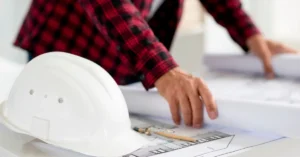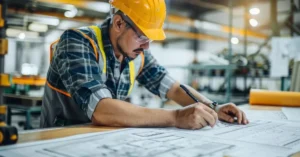Building a Sustainable and Earthquake-Proof Design

The intersection of sustainability and earthquake-proof design has become increasingly critical as our world faces the dual challenges of environmental preservation and disaster resilience. In this blog post, we will explore the importance of sustainable architecture and its connection to earthquake-resistant buildings. We’ll delve into the principles, innovations, and best practices that architects and engineers are adopting to create a more sustainable and earthquake-resistant built environment.
Sustainability in Architecture
Sustainability in architecture is all about designing and constructing buildings that have a minimal negative impact on the environment while promoting energy efficiency and longevity. Key principles of sustainable design include:
1. Site Selection and Design
Choosing the right location for a building can significantly impact its sustainability. By selecting sites with easy access to public transportation, infrastructure, and minimizing environmental disruption, architects can reduce a building’s carbon footprint.
2. Energy Efficiency
One of the most crucial aspects of sustainable architecture is energy efficiency. Buildings can incorporate passive design features like natural lighting and ventilation to reduce energy consumption. Additionally, the use of renewable energy sources, such as solar panels, can contribute to a more sustainable building.
3. Material Selection
The choice of construction materials is vital for sustainability. Using recycled, locally sourced, and eco-friendly materials not only reduces the environmental impact but also contributes to the well-being of occupants.
4. Water Efficiency
Conserving water is an essential part of sustainable design. Strategies such as rainwater harvesting, greywater recycling, and efficient plumbing fixtures can significantly reduce a building’s water consumption.
Earthquake-Proof Design
Earthquakes are natural disasters that can cause severe structural damage and loss of life. To create earthquake-resistant buildings, architects and engineers must adhere to the following principles:
1. Strong Foundations
A robust foundation is the backbone of an earthquake-resistant building. Deep, well-anchored foundations can prevent a building from collapsing during an earthquake.
2. Reinforced Structures
Buildings in earthquake-prone regions must be constructed with reinforced materials, such as steel and concrete. These materials have the strength to withstand seismic forces.
3. Damping Systems
Damping systems, like tuned mass dampers and base isolators, can absorb and dissipate seismic energy, reducing the impact of an earthquake on a building.
4. Redundancy
Redundancy in structural systems means that if one element fails, there are alternative load paths to support the structure. This helps prevent catastrophic failure.
The Synergy of Sustainability and Earthquake-Proof Design
The exciting synergy between sustainability and earthquake-proof design lies in the fact that both aim to create resilient structures that withstand various challenges. Here’s how they intersect:
1. Durable Materials
Many sustainable construction materials are inherently strong and durable. Bamboo, for example, is an eco-friendly material that is also incredibly strong and can be used in earthquake-resistant construction.
2. Energy-Efficient Solutions
Sustainable designs often incorporate energy-efficient features, and these principles can be extended to seismic retrofitting. Earthquake-resistant buildings can be designed to conserve energy even during a seismic event.
3. Reduced Environmental Impact
Earthquake-resistant buildings need strong materials and smart engineering. By choosing environmentally friendly materials and construction methods, architects can reduce the carbon footprint of these buildings.
4. Longevity
Sustainable buildings are designed for long-term use. Combining sustainability with earthquake resistance ensures that structures can withstand seismic events and continue to serve their intended purpose for decades.
Innovations in Sustainable and Earthquake-Proof Design
Architects and engineers are continually pushing the boundaries of what is possible in terms of sustainability and earthquake resistance. Some innovative approaches include:
1. Seismic-Resistant Green Roofs
Green roofs, covered in vegetation, can act as a seismic-resistant layer, absorbing seismic energy and reducing the impact on the building.
2. 3D Printing
3D printing technology allows for the creation of custom-designed, earthquake-resistant components, reducing construction waste and enhancing structural integrity.
3. Smart Buildings
Sensors and data analytics can be used to monitor a building’s structural health and make real-time adjustments during an earthquake to minimize damage.
4. Community Resilience
Architects are also focusing on designing entire earthquake-resistant communities. These communities are not only resilient in the face of disasters but are also models of sustainability.
The Future of Sustainable and Earthquake-Proof Design
As the global population grows and urbanization continues, the need for sustainable and earthquake-resistant buildings will become even more critical. We are likely to see:
1. Integrated Solutions
Designs that seamlessly integrate sustainability and earthquake resistance, ensuring that buildings serve a dual purpose.
2. Multi-Hazard Resilience
Buildings designed to withstand a range of natural disasters, including earthquakes, floods, and hurricanes.
3. Global Collaboration
Architects, engineers, and policymakers worldwide will work together to create universal standards for sustainable and earthquake-resistant construction.
Conclusion
In conclusion, the future of architecture is undeniably linked to the dual challenges of sustainability and earthquake resistance. By combining these principles, we can create buildings that not only benefit the environment but also protect lives and property during seismic events. The innovations in this field hold the promise of a safer, more sustainable, and resilient world for all.
If you’re interested in learning more about architecture firms in Europe, check out this comprehensive list of the top 50 firms compiled by Archgyan. From innovative startups to long-established industry leaders, this list has it all. Take a look and discover some of the most inspiring and influential architecture firms in Europe today.
If you’re interested in architecture and want to learn more about this amazing field, subscribe to our podcast on youtube
For more SketchUp tutorials, head to https://www.sketchupguru.com













